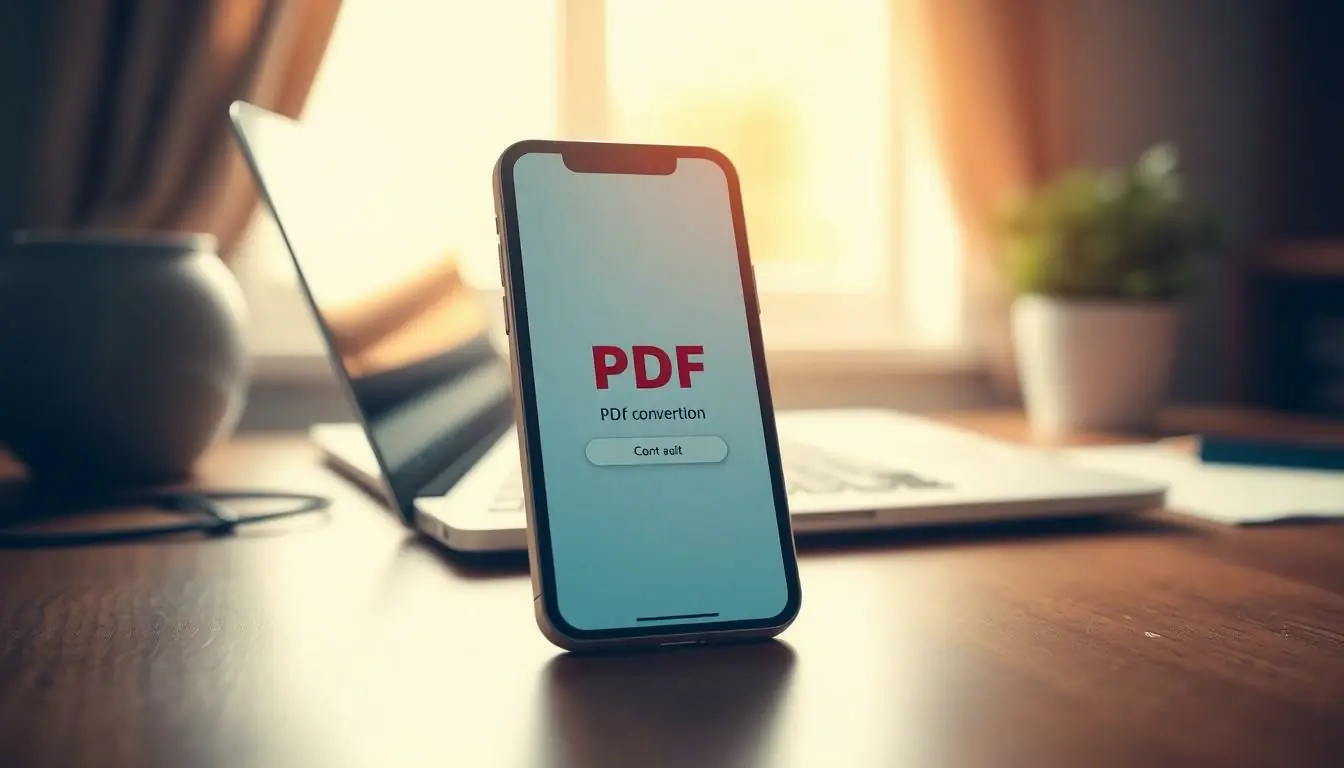In a world where artificial intelligence is becoming the go-to for everything from writing essays to solving riddles, one question keeps popping up: can you give ChatGPT a PDF? It’s a bit like asking if you can teach a goldfish to ride a bicycle—intriguing, but also a tad perplexing.
Table of Contents
ToggleUnderstanding ChatGPT
ChatGPT processes natural language and generates responses based on input. Built on the GPT architecture, it uses deep learning to understand context. Users often wonder how it interacts with various file formats like PDFs.
Processing PDFs directly isn’t within ChatGPT’s capabilities. Extracting text from these files is necessary before inputting into the model. Various tools exist that convert PDF content into plain text. Once the text is extracted, it can be fed into ChatGPT for analysis or conversation.
Technical aspects show that ChatGPT excels in text-based tasks. Generating responses or summarizing content happens efficiently when provided with textual input. Using clear and concise text leads to better interactions.
Compatibility with file formats is a limitation users should consider. While AI continues to evolve, current models focus primarily on text inputs. They don’t interpret file structures or formats directly. Therefore, uploads of complex files like images or PDFs won’t yield productive results.
Interaction with artificial intelligence thrives on clarity and directness. Providing well-structured questions enhances the likelihood of receiving comprehensive answers. Contextually rich queries yield better engagement from the model. Understanding these limitations helps users navigate their interactions effectively.
Overall, utilizing tools that convert PDFs into readable text is advisable. After conversion, users can confidently engage with ChatGPT. Hence, the debate around whether ChatGPT can handle PDFs highlights broader discussions on AI limitations and potential.
The Limitations of ChatGPT

ChatGPT operates within specific limitations that users must understand for effective interaction. These constraints affect how the model processes input and interacts with diverse content formats.
Input Format Restrictions
ChatGPT accepts only text-based input. It relies heavily on well-structured questions and clear context to generate meaningful responses. Natural language processing capabilities allow it to understand context and improve interactions. Complex input formats, including markdown or HTML, may produce unexpected results. Users must keep this in mind to ensure successful communication by presenting information in plain text.
File Type Compatibility
Compatibility with file formats presents another limitation for ChatGPT. Currently, it cannot directly interpret PDF or image files. Instead, users should extract text from such documents using conversion tools before interacting with the model. Common file types such as .docx or .txt work best for input, as these formats align with the model’s design. Understanding these compatibility issues aids in leveraging ChatGPT’s full potential for text-based tasks.
How to Share Information with ChatGPT
Interacting with ChatGPT requires careful handling of the information format. Direct uploads of PDFs aren’t possible, so extra steps help facilitate effective communication.
Copying Text from PDFs
Extracting text from PDFs is essential for sharing relevant information with ChatGPT. Users can utilize various tools and software designed for text extraction, such as Adobe Acrobat Reader or online PDF converters. After obtaining the text, it’s important to organize it for clarity. Simple formats like .txt or .docx are preferable, ensuring that the information remains accessible. Pasting the copied text into the chat offers a smooth transition, allowing ChatGPT to generate thoughtful responses based on the content provided.
Summarizing PDF Content
Summarizing PDF content enables concise sharing of large amounts of information. Users can employ summarization tools that distill key points from lengthy documents, helping maintain focus on critical aspects. Extracting pivotal sections before inputting them into ChatGPT enhances the interaction. Clear, structured input aligns with the model’s strengths, ensuring relevant and accurate responses. By providing well-organized summaries, users can maximize ChatGPT’s capabilities and receive meaningful insights based on the shared information.
Potential Workarounds
While ChatGPT cannot process PDFs directly, several methods allow users to engage with the model effectively.
Using Third-Party Tools
Third-party tools enable users to convert PDF files into text formats suitable for input into ChatGPT. Many online converters simplify this process, transforming PDFs into plain text or .docx files. Options like Adobe Acrobat Reader also allow for text extraction, providing users with a straightforward way to retrieve necessary content. Utilizing applications like PDF to Text converters minimizes effort while maintaining accuracy during file conversion. Once converted, users can copy and paste the extracted text into ChatGPT, ensuring clearer communication with the AI.
Manual Data Entry
Manual data entry remains a viable alternative for sharing PDF content with ChatGPT. Users can read key sections of a PDF, extracting essential information themselves. Transcribing vital parts into text format encourages clarity and relevance. Breaking down complex ideas into simpler phrases enhances understanding for both the user and the model. Even though this method may be time-consuming, it fosters a direct dialogue that can yield meaningful insights. Users should prioritize summarizing important points to maximize the interaction’s effectiveness.
Engaging with ChatGPT requires an understanding of its text-based nature. While it can’t process PDFs directly users can still harness its capabilities by converting PDF content into accessible text formats. This approach not only facilitates clearer communication but also enhances the quality of interactions.
By utilizing tools for text extraction and organizing information effectively users can maximize their experience with ChatGPT. It’s essential to recognize the limitations of AI in handling complex file structures. With the right strategies in place users can unlock valuable insights and make the most of this powerful technology.







